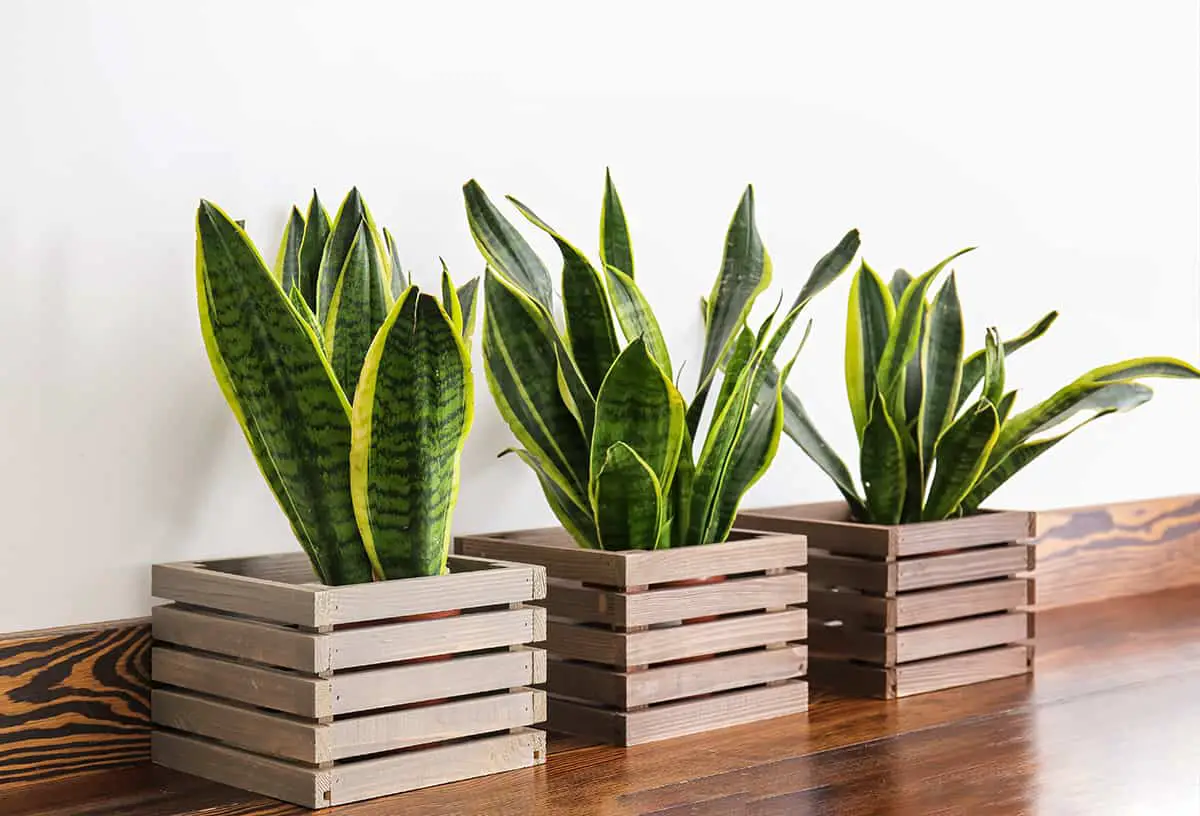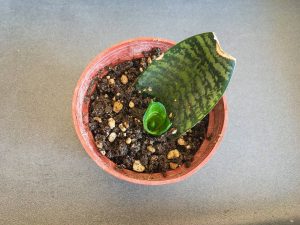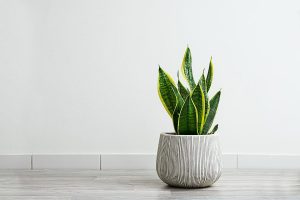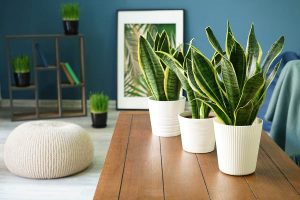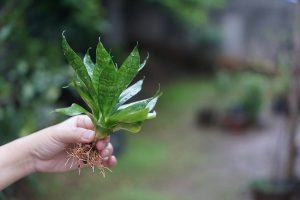Snake plants are loved as houseplants because of their striking appearance and low-maintenance nature. Here we look at the size of plant pot needed for a snake plant.
Table of Contents
Best Pot Size for Snake Plant
Snake plants grow in harsh and unforgiving conditions in their native home of West Africa. Typically you can expect to find snake plants growing along roadsides and on rocky terrain where there is little opportunity for root systems to spread. When grown as houseplants, snake plants thrive when these conditions are mimicked. The best way to do this is to keep your snake plant in a pot that doesn’t allow for much-growing space.
If you are an experienced house plant grower, you are probably used to repotting your plants every year or two in spring when their roots are getting snug in their current pots. With snake plants, you have to resist the urge to do this because they will be much happier when they are root bound. Keep them in an overcrowded pot for as long as possible because repotting them too early will usually cause unnecessary harm.
The best size pot for a snake plant is a pot that is around half an inch bigger than the diameter of the root ball on either side. For example, if your root ball measures 11 inches across, go for a pot that is 12 inches. This will allow for half an inch of wiggle room around the edge of the root ball so that they have a little space to grow but not too much.
When to Repot a Snake Plant
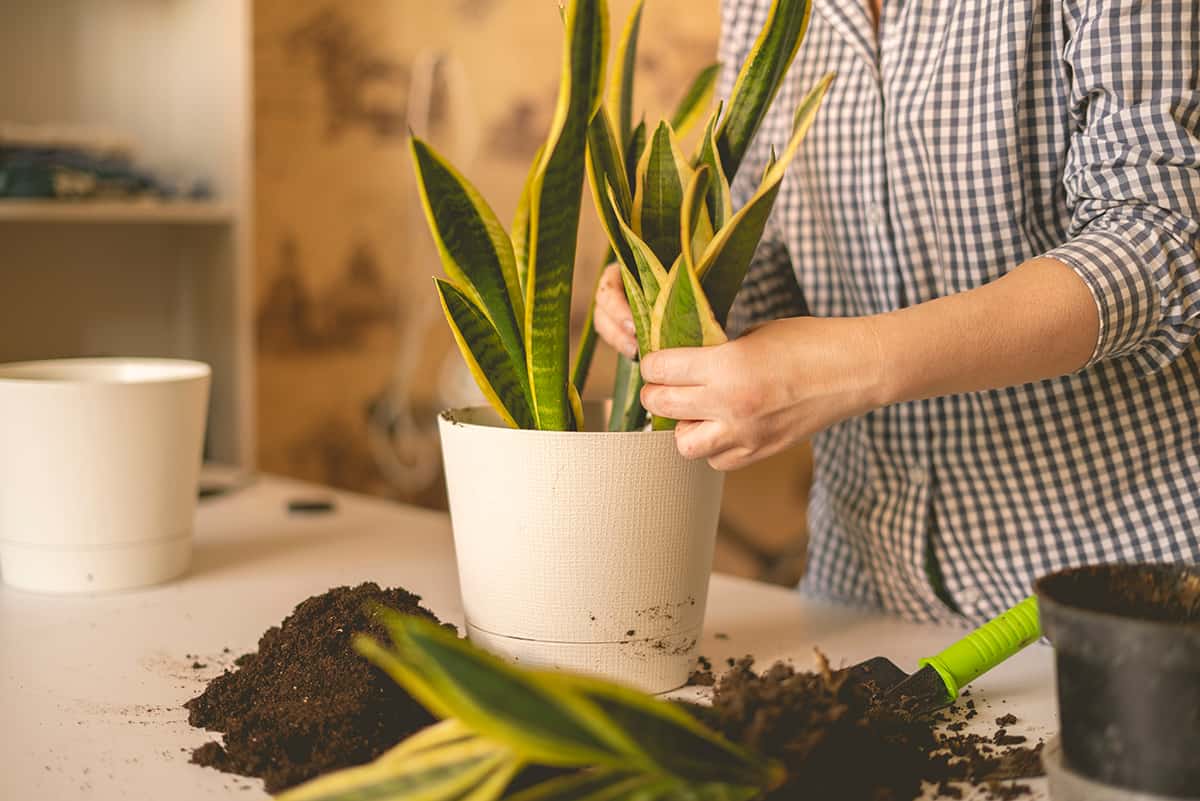
Snake plants thrive when they are root bound. You will find that a root-bound snake plant in a compacted pot will send out much more new growth compared to one in a spacious pot. To keep your plant happy and healthy, only repot it when it is absolutely essential. Often you can go for in excess of 10 years before you will need to repot a snake plant. The key point here is: don’t rush it!
Extreme overcrowding
Snake plants love to be overcrowded, so don’t move them to a bigger pot at the first sign of limited growing room. Instead, wait until the majority of the space on the surface of the soil has been taken up by new growth. When there is no longer space for new leaves or pups to emerge, this is considered overcrowded enough to warrant repotting the plant.
Root rot
If a plant is suffering from root rot, then repotting it can give it a better chance of regenerating compared with leaving it in its current pot, but this will depend on the extent of the rot. If you suspect the root rot is severe, pull the snake plant out of its pot and remove all of the soggy, moldy, compacted soil away from the roots. Cut away any rotten roots, and repot the plant in a pot of the same size.
Escaped roots
Some gardeners are advocates of repotting snake plants when their roots are pushing through the drainage holes in the bottom of their pot. This is generally an indication that they have no more space within the pot, and therefore have had no choice but to escape out of the drainage holes. If your snake plant’s roots are escaping, then you can take this as a sign that the plant wants to be repotted.
How to Repot a Snake Plant
When it’s time to put your snake plant into a new pot, the process is fairly simple. Even if you have never done it before, you can make a good job of it with the steps below.
Prepare new soil
The first thing you need to do when repotting a snake plant is make sure you have an appropriate type of soil to use with it. The best type of soil for any snake plant is well-draining soil. This is because well-draining soil has air pockets to allow the roots to breathe, and water will drain through it to avoid too much moisture being held against the roots.
Both of these things are essential for preventing root rot. You can buy a potting mix designed to be used with cacti or succulents, or you can make your own mix. A regular potting mix combined with perlite or sand will help it to drain more quickly.
Plant removal
Next up, you need to remove the snake plant from its current pot. This might be a struggle if your plant is very root bound, as it will be tightly compacted in the pot. Gently squeeze the plastic pot and hold the snake plant at the base of the leaves while pulling firmly but with care. Twisting the pot a little can help if the plant is resisting coming out of its pot.
Some roots may sustain some damage, especially if they were stuck through the drainage holes, but this won’t cause any lasting problems. Once the plant is free, rub the roots together between your fingers to dislodge the old soil. Remove as much of the old soil as you can without harming the roots.
Prepare new pot
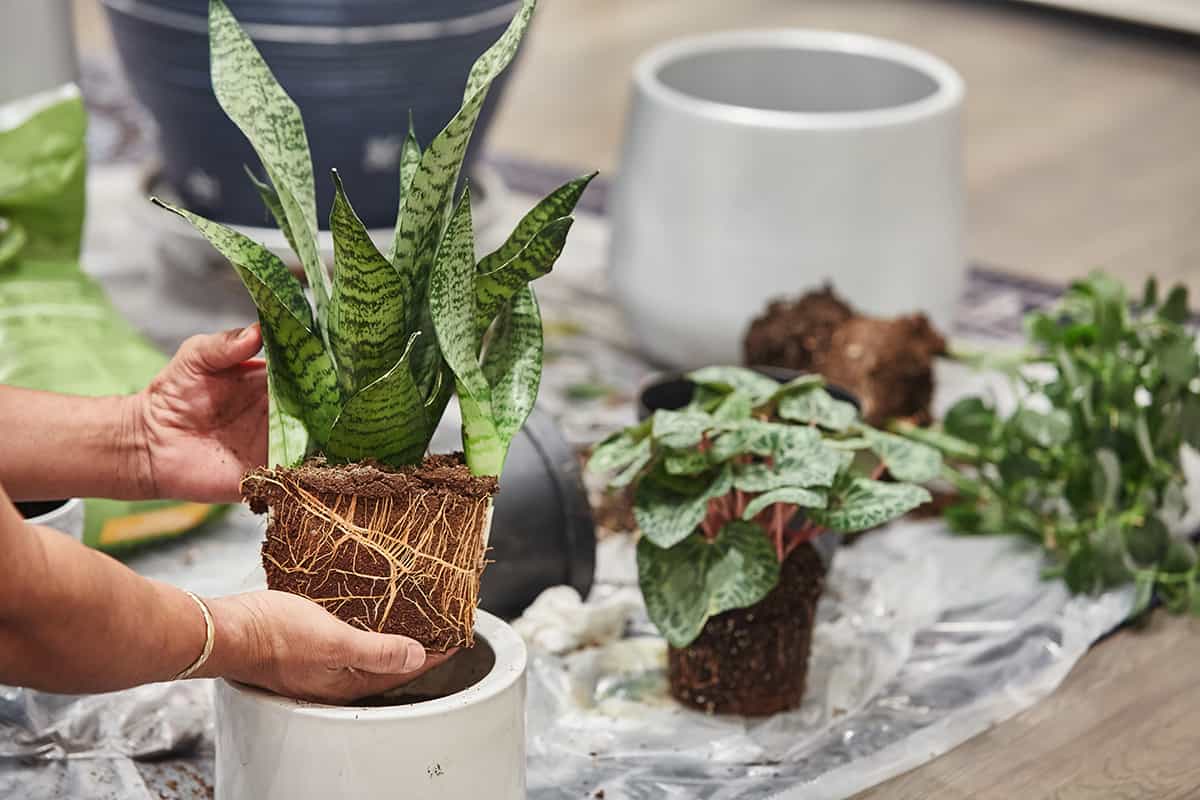
If you are repotting due to overcrowding, then your next pot should be one size up. The root ball should fit comfortably inside it without more than half an inch of space around each edge. Fill the bottom of your new pot with a thin layer of the new soil mix, and place your snake plant on top. Fill around the sides of the roots so that the plant is secure, and press extra soil on top to set it in place.
Settle plant in
The plant should now be sitting at the same level in the pot as it did inside the last pot, with the soil covering the same amount of the plant. Water it thoroughly to help it settle in unless you are repotting due to root rot, in which case it’s a good idea to let the roots dry out for a few days before watering. Once water emerges from the drainage holes in the new pot, cease watering and dispose of any excess. Continue to care for your snake plant as normal.
Best Pot Type for Snake Plant
There are a number of pots that will work well for a snake plant. If you are keeping your snake plant as a houseplant, then the two best options are a terracotta pot or a plastic pot with drainage holes which you put inside a decorative pot. Outdoor snake plants are best planted directly in the ground or in terracotta pots.
Terracotta is a popular material for plant pots because it is porous, and therefore, it will absorb excess water instead of pooling at the base of the pot. In this way, it can help to prevent root rot in snake plants. Plastic pots also work well as long as they have drainage holes for water to escape. Plastic pots are good for plants who like to be root bound because they will bend slightly to allow for the shape of the roots, as opposed to other pots, which may crack or split.
